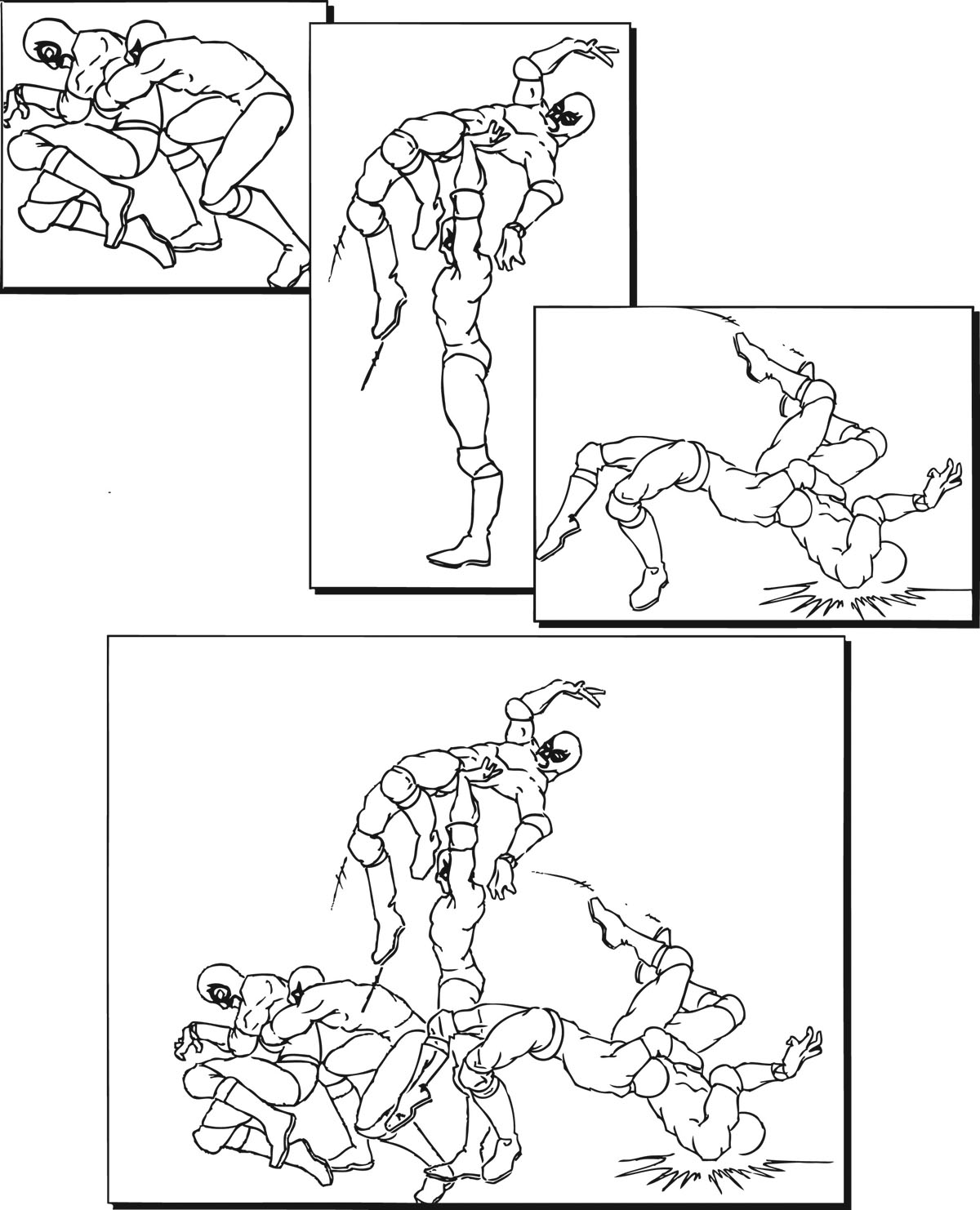How to Play Luchador: Way of the Mask!
You might be out there right now thinking to yourself, 'I sure love luchadors, and I love role playing, but is this really the game for me?' Well my doubtful friend, let me allay a few of your concerns by walking you through some of the basic rules of the game.
Checks
All dice rolls in the game are called checks. The GM may require you to make a Strength check to force open a door. This means he wants you to roll a 20 sided die and roll equal or under your character's Strength rating. Simple, right?
The GM can assign a level of difficulty to a check to reflect any conditions that might impede the character's success. For example, if someone is trying to hold the door shut to keep your character out, the GM could increase a level of difficulty for the check. In this case the difficulty is the strength level of the intervening character. Note that the opposing strength level becomes the level of difficulty. This is a simple aid for overworked GMs.
When rolling a check with difficulty, the player must subtract the level of difficulty from the rating in order to determine the chance of success. So, if our door opening character has a strength rating of 12, and the level of difficulty is 3, then the player must roll a 9 or less to succeed. The chance of success is sometimes abbreviated as COS.
Margin and Degree of Success
Now that you know what you need to roll, we add a few complications. The Margin of Success, frequently abbreviated as MOS, measures how much a roll exceeds the chance of success. If our door-opening hero from the prior example rolls a 6, then the margin of success is 3 (9-6). The larger the margin of success, the easier the task looked for the character. A MOS of 0 gets the door open, but the hero struggles the entire way.
The margin of success is a vital part of the game mechanics. It increases the damage of attacks for combat skills. It represents the intricacy of wrestling moves, applying penalties to a held character. It determines the amount or duration of influence in social skills. Each individual skill listing includes the effects the MOS has in the game.
But that's not all! The margin of success also determines the degree of success or failure. Sometimes the GM doesn't need to break things down to the exact margin of success, but does need the extended pass/fail response of degree of success. There are four degrees of success based on the MOS.
A check is a Failure if the roll didn't hit the chance of success, but didn't fail by 5 or more. A simple failure just means the character did not accomplish the task. The character hasn't made progress, but it could be worse.
Not surprisingly, a Disastrous Failure occurs when the check was failed by 5 or more. A disastrous failure means the characters efforts have actually made things worse. This allows the GM to find creative ways to aggravate the situation. If the character in our on-going example rolled a 17, then the GM may rule he hurt his shoulder against the door and is stunned with pain.
A Success means the character has accomplished the task. This occurs on a margin of success of 0 to 4, with each point making the accomplishment look that much better.
An Exceptional Success has a margin of success of 5 or more. At this point the character is making the task look easy. An exceptional success would allow the character to casually kick the door open and stride into the room to confront the villain in a single turn of gameplay. The game uses exceptional successes to trigger a variety of special effects ranging from stunning opponent with an exceptional hit, or advancing through multiple step wrestling moves in a single turn.
Through the rules above the GM attains a lot of information from a single die roll. Moving from door opening to combat, your character might decide to throw a forearm into the face of an intervening bad guy. The GM determines this is a check against your Strike skill of 16 with a level of difficulty of 3 for the agility level of your opponent. If you roll a 7, then your margin of success is 6 which is an exceptional success. The exceptional success threatens to stun the target. The 7 margin of success adds to the damage of the blow. The elbow catches the bad guy in the face sending him reeling!

Combine moves into one exciting turn!
I usually describe the complex action mechanic as panels in a comic book. Each step can be an individual panel, or all steps can be tied into a single panel with motion lines and a few exceptional successes.